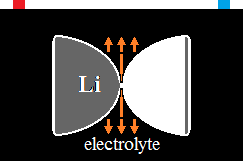The energy of the forces
of nature.
The property of positive and negative vector polarities to attract and
repel are
the only forces of existence. The existence of vector properties constitutes
space,
ector space. The simple force of attraction between two polarities, positive
and negative, represents what we call energy, the energy of nature.
Energy does not move, it is movement itself, the effect of vector forces.
Vector properties are detectable through the sense organs, organs produced
precisely by these properties, in the form of sensors. Positive and negative
polarities produce the sensations of acid or base. The oscillations of
orthogonally closed circuits are converted biologically, only for beings,
into sensations of light, darkness, heat or cold. All these sensations
are vector
interactions, energy. Therefore, energy is the effect of interactions,
of vector
polarities. The interactions of vector forces, energy, form orthogonally
closed vector circuits in vector space. In closed vector circuits, the
force
of attraction increases inversely proportional to the radius of the circuit.
In the sudden conversion of circuit length into density, the forces of
attraction became centripetal forces, pressure. Centripetal forces produce
in beings the sensation of weight, pressure, density, only in the area
of ??
orthogonally closed circuits. The centripetal forces mutually and alternately
compress the density of the circuits, generating successively denser oscillations,
until they become a tiny solid and cold
object, that is, without
oscillations. This vector energy structure is called a hydrogen atom,
or proton,
or ion, or matter. In turn, the vector polarities of hydrogen, with their
forces
of attraction and repulsion, form orthogonally closed vector circuits,
with
macroscopic dimensions, the bodies of the universe, energy, the existence
of nature. At the level of intelligent beings, faithful to the materialistic
conception, the need to form mobile sources of electrical energy arises.
The sources can be batteries or accumulators of electrical energy,
necessary for travel or for better living conditions.
Pila volta.
Alessandro Volta, interpreting Luigi Galvani's experiment with animal
electricity,
imagined an electrical element, a cell. The element, two discs, of copper
and
zinc, with a paper disc between them, moistened with saline solution,
forms a
kind of P-N junction, copper-zinc. The alkaline paper is the junction
that
partially connects the forces of the vector polarities, positive and negative,
forming the potential of the voltaic element. The external closure of
the
potential produces attractive forces between the disks, a chemical reaction
of
electrolytic corrosion. With such successively superimposed elements,
the
voltaic pile works. The battery terminals, being parallel vector polarities,
repel
each other and curvilinearly polarize the vector space, like magnetic
poles,
forming an inherent charge. Connecting a load to the battery terminals
closes
the circuit and simultaneously produces another orthogonal closed vector
circuit, called a magnetic field. The attractive forces in orthogonal
closed
circuits contract the length of the circuit and become centripetal forces,
which compress each other. The transmission, the propagation of energy
in a closed circuit through a wire, consists in the orientation
of the vector polarities of the elements, in direction and sense,
compressed by the magnetic centripetal force.
Fuel cell.
The fuel cell is formed like the voltaic cell, from cells connected successively.
The cell, two electrodes, catalysts permissive of the passage of a gas,
linked
together by a special electrolyte. The vector polarizations of the electrodes
in
the voltaic cell are those of the elements. In the fuel cell, the electrodes
are
polarized by the presence of the positive and negative vector polarities
of the gas.
At the anode, the vector polarities of hydrogen are ready to close the
connecting
circuits with those of oxygen at the cathode, through the insulating electrolyte.
Thus, between the electrodes of the cell, the vector forces of attraction
of the gases form a characteristic potential, similar to that of the voltaic
cell.
The charge at the cell terminals closes the vector circuit of the cell
and
simultaneously an orthogonal closed vector circuit - the magnetic field.
The magnetic centripetal forces orient the vector polarities in the electrolyte
in the direction and sense and the hydrogen closes the vector circuits
of connection with oxygen, forming a water molecule.
Obviously, the chemical reaction is reverse electrolysis of water.
The fuel cell is more of a chemical reactor.
Lithium-ion battery.
The Li-ion cell has two electrodes and electrolyte, like the voltaic cell.
The cell electrodes, with their vector polarities being very close, form
the
characteristic potential, 0.7V, through the electrolyte. The battery being
rechargeable, charges electrically, chemical energy. When charging, the
electricity source closes the circuit through the cells, in the opposite
direction
to their polarizations. The lithium atoms in the positive electrode, being
very
reactive, through their vectorial repulsion forces dissociate and close
bonding
circuits with the negative electrode. These reactions, dissociation/association,
the opening and closing of the vectorial bonding circuits, produce oscillations
and a galvanization process. The oscillations amplify the temperature,
reversing the process, up to explosions, the reason for the complexity
of the
electrolyte, with anti-thermal purpose and to stop the reversal of the
process.
The chemically charged battery consists of the potential energy of the
lithium
in the negative electrode, voltage. Connecting a consumer, closing the
circuit,
produces the orthogonal closed vector circuit, the magnetic field.
The centripetal force of the magnetic field, orients the vector polarities
in
direction and sense, throughout the circuit, the propagation. The propagation
produces vectorial forces of attraction in the electrolyte, which chemically
open
the return circuit for lithium, proportional to the intensity of the orientation.
As in the voltaic cell, the electrolyte seems to be a kind of chemically
tap.
The processes in the battery can be compared to the operation of an
hourglass. The sand is the lithium, the useful energy being the time
it takes for the lithium to flow through the electrolyte.

